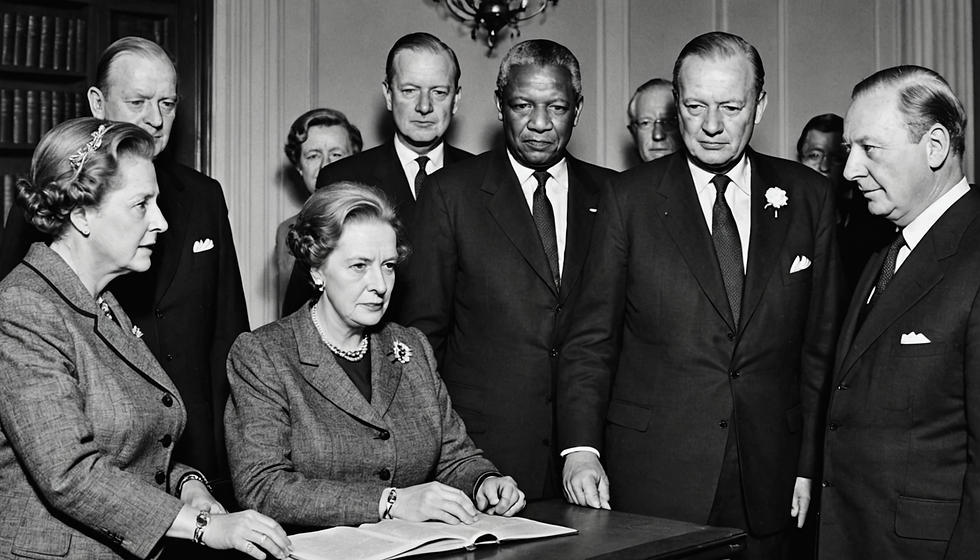Conflict analysis in negotiations
- R.M. Boylan

- Feb 22
- 5 min read
Updated: Feb 26
R.M. Boylan BSc. M.A.

Conflict Analysis in Negotiations
The "Sleeping Volcano"
When threats are introduced in a partnership, it signifies the onset of a conflict. This indicates that a negotiation strategy and plan should begin to take shape before the conflict intensifies. An essential component of your negotiation strategy and plan is conducting a conflict analysis. This includes identifying the obvious signs of conflict and what I refer to as the "Sleeping volcano." Assessing the "sleeping volcano" requires a risk assessment of the situation and interdependencies, along with a conflict analysis. This process includes analyzing the character of your counterpart. There are levels of development which indicate what an individual is capable of doing morally, emotionally and cognitively in a given situation. The behaviors that are not visible are the "sleeping volcano".
Conflict analysis involves a methodical approach to comprehending the root causes, dynamics, and effects of conflict. Notable scholars like John Paul Lederach and Mary Anderson have made substantial contributions to this field, highlighting the significance of context and the necessity for thorough analysis in resolving conflicts.
Conducting a Conflict Analysis
To conduct a conflict analysis in a negotiation, the following steps can be used:
Identify Stakeholders: Determine who is involved in the conflict and their interests.
Contextual Analysis: Analyze the historical, social, political, and economic context of the conflict.
Identify Issues: Clarify the main issues at stake and how they affect the involved parties.
Power Dynamics: Examine the power dynamics between stakeholders and how they influence negotiation outcomes and inter-relationships.
Conflict Intensity: Evaluate the levels of intensity in the conflict, categorizing it as latent, manifest, or violent.
Potential for Resolution: Assess the possibilities for negotiation and resolution based on the analysis.
Evaluating Levels of Intensity of Conflict
The intensity of conflict can be evaluated through various indicators:
Latent Conflict: Underlying tensions without open hostility.
Manifest Conflict: Open disputes and confrontations.
Violent Conflict: Escalation to physical confrontations, including war.
Forms of Violence in Conflict
Violence can appear in various forms, each with distinct purposes for enforcing behavior or ensuring compliance. The commonly discussed forms include:
1. Economic Violence
Economic violence refers to employing economic sanctions or deprivation as a coercive strategy. Countries might implement trade restrictions or blockades to influence the actions of a target nation or to take over a nation before introducing armed conflict.
2. Technological Violence
Technological violence refers to the use of advanced technologies, such as cyber-attacks, to disrupt the functioning of states or institutions, thereby enforcing compliance through fear, infrastructure weakening and destruction and/or instability.
3. Sanctions
Sanctions represent a structured form of economic coercion, used by nations to impose penalties on a country with the aim of influencing its policy or behavior. They may be broad or focused, impacting particular individuals or sectors.
4. Psychological Violence
Psychological violence involves tactics such as propaganda, misinformation, and psychological warfare to manipulate perceptions and instill fear, thereby influencing behavior without physical confrontation.
Impact & Use of Technology in Psychological Operations
Psychological operations (PSYOP) employ a range of methods to shape the perceptions, attitudes, and behaviors of people or groups. In recent years, technology has significantly enhanced these operations, frequently resulting in mental distress and psychological torment. This discussion examines how countries use technology in psychological operations, referencing scholarly sources and real-world instances.
Methods of Psychological Operations Using Technology
1. Cyber Warfare and Information Manipulation
Nations increasingly use cyber capabilities to manipulate information and spread disinformation. This can create confusion, fear, and mistrust among populations. (Benkler et al., 2018).
2. Surveillance and Monitoring
Surveillance technologies, including facial recognition and data collection, can be employed to monitor citizens and suppress dissent. (Zuboff, 2019).
3. Psychological Manipulation through Social Media
Social media platforms are used to create echo chambers and manipulate public sentiment. Algorithms can be designed to promote divisive content, leading to increased polarization and mental distress among users. The Cambridge Analytica scandal highlighted how data analytics could be used to target individuals with tailored psychological campaigns (Cadwalladr & Graham-Harrison, 2018).
4. Electronic Warfare and Psychological Operations
Electronic warfare techniques can disrupt communication and create psychological distress. For example, the use of jamming technology can prevent access to information, leading to feelings of isolation and helplessness among affected populations (Gompert & Libicki, 2008).
Consequences of Technological Psychological Operations
1. Mental Health Issues
The psychological impact of these operations can lead to significant mental health issues among affected populations, including anxiety, depression, and PTSD. The constant state of uncertainty and fear can exacerbate existing mental health conditions and provoke suicide is the intent. (Hoffman, 2018).
2. Erosion of Trust
The manipulation of information and surveillance can lead to a profound erosion of trust in institutions and fellow citizens. This breakdown can result in social fragmentation and increased conflict within societies (Fukuyama, 2018).
The integration of technology into psychological operations represents a significant evolution in warfare and control tactics. As nations continue to leverage these technologies, the implications for mental health and societal cohesion are profound. Understanding these dynamics is crucial for developing strategies to mitigate their effects on individuals and communities.
5. Physical Violence
Physical violence is the most obvious form, encompassing direct harm or threats to individuals or groups. This may involve military action, terrorism, cyber violence to digitally confine, render unemployed, blackmail, abduct, and then traffic the victim, or violence sponsored by the state.
6. Sexual Violence
Sexual violence is a tool of war and oppression, used to instill fear, exert control, or punish communities and women. It often targets vulnerable populations and can have lasting societal impacts. It is an obstacle to economic development.
Linking Violence to Conflict
Violence in all its forms plays a crucial role in influencing the dynamics of conflict. Authoritarian governments, especially, might use these methods to uphold control and stifle opposition. Grasping the relationship between these types of violence and conflict can offer valuable insights into negotiation strategies and the likelihood of resolution.
References
Benkler, Y., Faris, R., & Roberts, H. (2018). Network Propaganda: Manipulation, Disinformation, and Radicalization in American Politics. Oxford University Press.
Cadwalladr, C., & Graham-Harrison, E. (2018). The Cambridge Analytica Files. The Guardian. Retrieved from https://www.theguardian.com/news/series/cambridge-analytica-files
Fukuyama, F. (2018). Identity: The Demand for Dignity and the Politics of Resentment. Farrar, Straus and Giroux.
Gompert, D. C., & Libicki, M. C. (2008). Mind Over Muscle: How to Build a 21st Century Military. RAND Corporation.
Hoffman, B. (2018). Inside Terrorism. Columbia University Press.
Zuboff, S. (2019). The Age of Surveillance Capitalism: The Fight for a Human Future at the New Frontier of Power. PublicAffairs.
Lederach, J. P. (1997). Building Peace: Sustainable Reconciliation in Divided Societies. United States Institute of Peace Press.
Anderson, M. B. (1999). Do No Harm: How Aid Can Support Peace—or War. Lynne Rienner Publishers.
Galtung, J. (1990). Violence, Peace, and Peace Research. Journal of Peace Research, 27(3), 291-305.





Comments